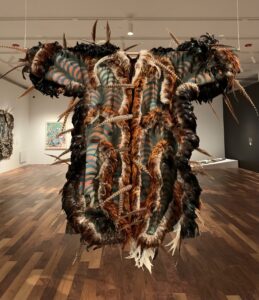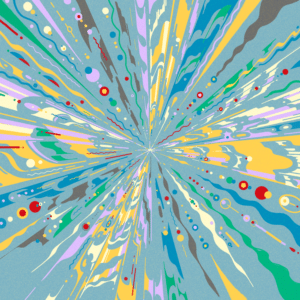Energy in All Directions—an exhibition at the Tang Teaching Museum and Art Gallery at Skidmore College—celebrates connection and community by bringing Shaker objects into conversation with contemporary works. The newer pieces, drawn from the Tang’s permanent collection, are all by artists who were represented by Feature Inc. gallery, which, like the Shakers, was known to value inclusion, equality, and innovation. The Shaker pieces are on loan from the Shaker Museum’s collection of more than 18,000 artifacts.
While the Tang Museum is closed due to the pandemic, the exhibition can be experienced through images online and will be supplemented with video walk-throughs and interviews with the artists.
For his new show at the Tang Museum, “Energy in All Directions,” curator and director Ian Berry has woven together objects, artwork, communities and organizations like the tightly laced spokes of a Shaker basket.
At its most tangible level, the show juxtaposes pieces from the collection of the Shaker Museum at the historic Mount Lebanon site with contemporary work from the Tang’s permanent collection. A spiraling enamel-on-wood piece by Jim Isermann hangs above a circular braided rug made by the Shakers in Canterbury, N.H.; Alexander Ross’ oil painting of a hive-like surface is placed near a Shaker “swarm box” made for transporting bees.
The art spans sculpture, painting, photographs and drawings; what it has in common is that all of the artists were represented at one time by a gallery called Feature Inc., founded by an artist-turned-gallerist who called himself simply Hudson. Feature began life in Chicago in 1984, and Hudson moved it to New York City in 1988.
“He created a very unusual, eccentric and warm community of artists around his gallery,” Berry said in a recent interview. “When I first started going to see artwork as a young curator, decades ago, I would go to Feature and it was a really important part of my own education about artists and the art world.”
While Hudson did not have any direct link to the Shakers, the parallels between the Shaker community and the community of contemporary artists that grew up around Feature inform the spirit of the show as well as its content. Bringing the objects and artwork together was “a curatorial experiment of sorts—using the gallery as a laboratory for research into our collection and into the Shaker objects, which is the best way to think about the museum in this time when we’re not open to public,” Berry explained.
Sign up for updates
Explore Themes and Ideas































































